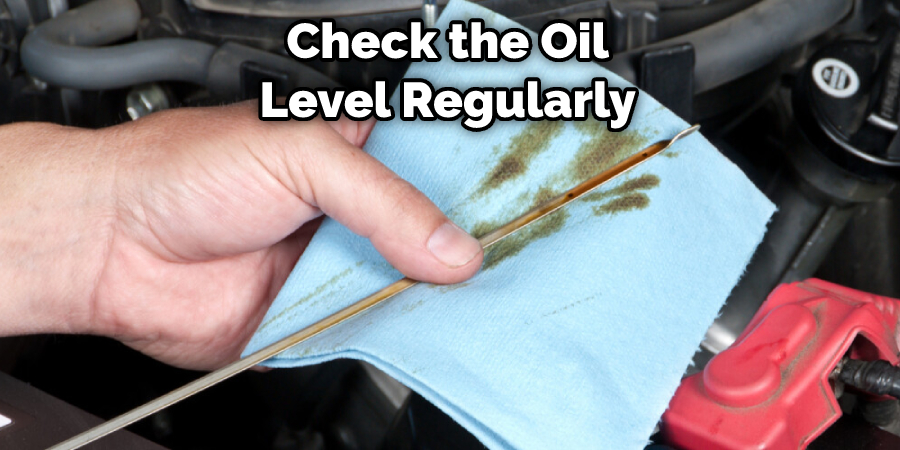Performing a restricted performance diagnostic on your vehicle can save you time and money in the long run. A restricted performance warning light or error message means that there is something wrong with your car’s engine, transmission, or other powertrain components. It could be a simple issue, such as a faulty oxygen sensor, or a more complex issue, such as an engine misfire.

Performing a restricted performance diagnosis can help you identify and resolve the problem quickly so that you don’t have to spend time or money on unnecessary repairs.
Additionally, taking care of your car’s restricted performance issues now will help prevent even more expensive problems in the future. Therefore, taking action and diagnosing your vehicle as soon as possible is important. In this blog post, You will learn in detail how do i fix my jaguar restricted performance.
Step by Step Processes for How Do I Fix My Jaguar Restricted Performance
Step 1: Inspect Your Engine
The first step in fixing your Jaguar’s restricted performance is to inspect the engine. Check for any signs of wear and tear, such as hoses or belts that may be loose or damaged. Make sure all filters are clean and free from obstructions. It’s also important to check the oil levels and ensure they’re at the proper fill level.
Step 2: Diagnose the Problem
If you’ve inspected your engine and everything looks okay, it’s time to diagnose the problem. You’ll need a scan tool to read diagnostic codes and pinpoint any issues with your Jaguar’s engine performance. This can be done at a local auto repair shop or through an online service such as CarMD.
Step 3: Fix or Replace the Problem Parts
Once you’ve identified the problem, it’s time to replace or fix the necessary parts. Depending on the severity of the issue, this may be as simple as replacing a worn-out hose or belt. If more serious damage occurs, such as an engine component failing, you may need to replace it.
Step 4: Drive Your Vehicle and Check the Performance

Once the problem parts have been replaced or fixed, it’s time to take your vehicle out for a spin. During this drive, pay attention to how the car performs and ensure there are no more issues with restricted performance. If everything feels good and your Jaguar runs smoothly, you’ve successfully fixed your restricted performance issue.
Step 5: Have Your Vehicle Regularly Serviced and Maintained
To ensure that your Jaguar’s performance remains unrestricted, it’s important to have the vehicle regularly serviced and maintained. This includes regular oil changes, filter replacements, and other routine maintenance checks. Doing so will help keep your vehicle in top condition and can prevent future restricted performance issues.
By following these steps, you’ll be able to quickly diagnose and fix any restricted performance issue with your Jaguar. And if you’re having trouble or need more assistance, it’s always best to consult a professional mechanic for advice.
Tips for How You Fix Your Jaguar Restricted Performance
- Ensure Your Car is Properly Maintained: Ensure that all relevant parts of your car are in good condition, such as the brakes, tires, and other components. Make sure to check them periodically and take care of any necessary repairs or replacements.
- Check for Engine Issues: If a faulty part or engine issue causes a performance decrease, it’s important to diagnose and fix it as soon as possible.
- Confirm Fuel Quality: Poor-quality fuel can cause restricted performance in Jaguar cars, so make sure you use the correct fuel for your specific model.
- Upgrade Your Car’s Computer System: Jaguar cars have a powerful computer system that can help optimize performance. If it has become outdated, consider upgrading the software or hardware to improve your car’s performance.
- Get an Alignment: Regular wheel alignments are important for maintaining maximum traction and power output from your wheels. Make sure to get them performed regularly if you notice any kind of wobbling or uneven wear and tear on your tires.
- Monitor Air-to-Fuel Ratios: The air-to-fuel ratio should be monitored regularly to ensure that your car performs at its best. If it’s not, you may need to get the carburetor adjusted or replaced.
- Regular Servicing: Make sure to get your car serviced regularly to keep it running at its best. This includes oil and filter changes, spark plug replacement, and other routine maintenance tasks. It is important to keep your Jaguar’s performance up-to-date and running smoothly.

Following these tips can help you avoid any restricted performance issues in your Jaguar. If the issue persists after following these steps, it is best to seek professional help to identify and repair the problem.
How Can You Prevent Future Instances of Restricted Performance?
- Regularly inspect your Jaguar’s engine and exhaust system for any signs of wear or tear.
- Change the spark plugs, air filter, and oil filter regularly as your vehicle’s manufacturer recommends to maintain optimal engine performance.
- Check your Jaguar’s fuel filter regularly and replace it when necessary.
- Make sure your Jaguar is serviced in accordance with the manufacturer’s recommended service schedule and have any potential issues inspected and addressed promptly by a qualified technician.
- Use quality fuel, oil, filters, and other parts to ensure that your car can perform at its best both now and in the future.
- Keep your Jaguar’s engine coolant levels topped up, and replace any worn hoses or belts as required.
- Make sure you maintain good driving habits, including avoiding aggressive driving, sudden acceleration, and hard braking to reduce the likelihood of restricted performance issues occurring in the future.
- Pay attention to any warning lights, noises, or other abnormalities that may indicate a potential issue with your Jaguar’s engine performance.
- Have your Jaguar professionally inspected at least once a year to ensure all components are working correctly and identify any problems before they become more serious.
- Follow the manufacturer’s instructions for resetting fault codes and addressing any potential issues with the engine.
How Should You Properly Maintain Your Car for Maximum Engine Efficiency?
Proper vehicle maintenance is important for maximizing engine efficiency and avoiding restricted performance. A few simple steps can help ensure your vehicle is running at its best:

- Change Your Oil Regularly: Oil helps keep your engine’s moving parts lubricated, allowing it to perform optimally. Check the oil level regularly and change it at the recommended intervals.
- Check and Replace Fluids: All of your car’s fluids—oil, coolant, brake fluid, transmission fluid, power steering fluid—should be checked regularly to ensure they are at the right levels and that there is no contamination. Regularly replacing these fluids can help keep your car’s engine running smoothly.
- Change Air Filters and Spark Plugs: Replacing your air filter helps keep your engine from getting clogged and allows it to breathe properly. Additionally, old or worn-out spark plugs can cause issues with the performance of your vehicle’s engine.
- Follow Recommended Service Intervals: Your car’s manufacturer knows its products best and will usually provide a schedule of recommended intervals for routine maintenance, such as oil changes, air filters, spark plug replacements, etc. Following this schedule can help ensure that your vehicle is running at its best and prevent restricted performance.
By following these steps, you can ensure that your car runs efficiently and avoid the dreaded “restricted performance” message. Properly maintaining your vehicle can also help extend its life and save you money in the long run.
How Can You Ensure That Similar Issues Do Not Occur in the Future?
The best way to avoid similar issues in the future is to take preventative measures. Regular maintenance, such as oil changes and filter replacements, can help keep your Jaguar running smoothly for longer. Additionally, periodically tuning the engine can ensure that any minor problems are caught before they become more serious.
Keeping track of warning lights on the dashboard and having the car serviced if needed will also help keep your vehicle running at its optimal performance level. If you experience any signs of restricted performance, it is important to have it diagnosed as soon as possible to resolve the issue quickly.

With proper maintenance and care, you can ensure that your Jaguar continues to run smoothly for years to come. If you are experiencing restricted performance with your Jaguar, it is important to take the necessary steps to identify and fix the issue.
Conclusion
In conclusion, there are many things you can do to fix your Jaguar’s restricted performance. You may need to take your car in for service if the problem is more serious, but there are a few steps you can take on your own first. Check all of your engine’s fluid levels and ensure they are at the correct level. Ensure that all sensors and connectors are in the proper place and that there are no loose wires or connections.
Replacing your air filter and spark plugs may also help with performance. If these measures do not work, then you should take your car in for a professional inspection and possible repairs. You can get your Jaguar running smoothly with dedication and effort. I hope this article has been beneficial in learning how do i fix my jaguar restricted performance. Make Sure the precautionary measures are followed chronologically.
